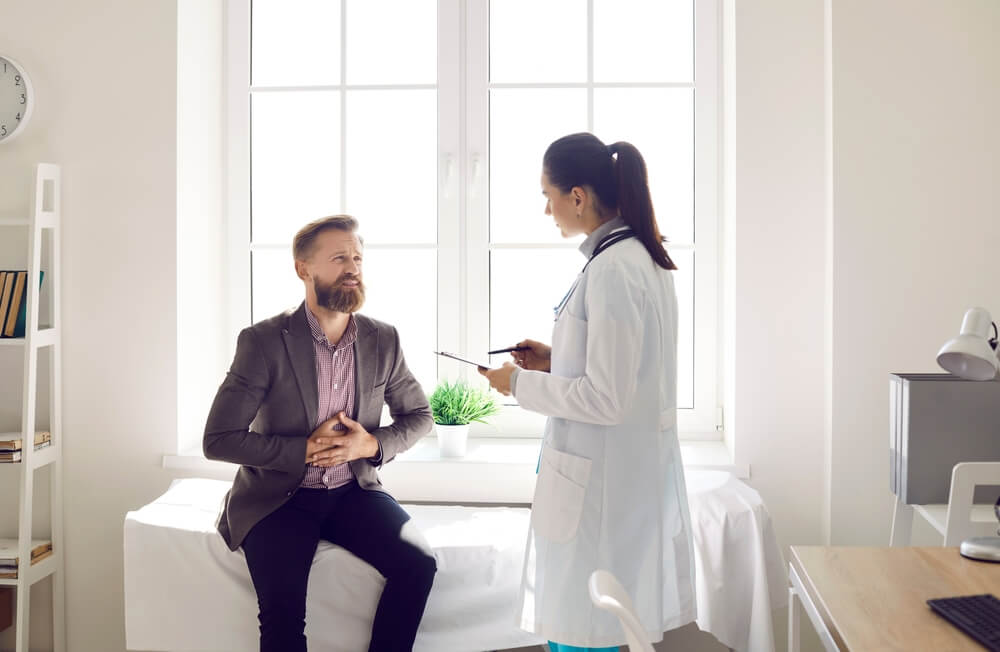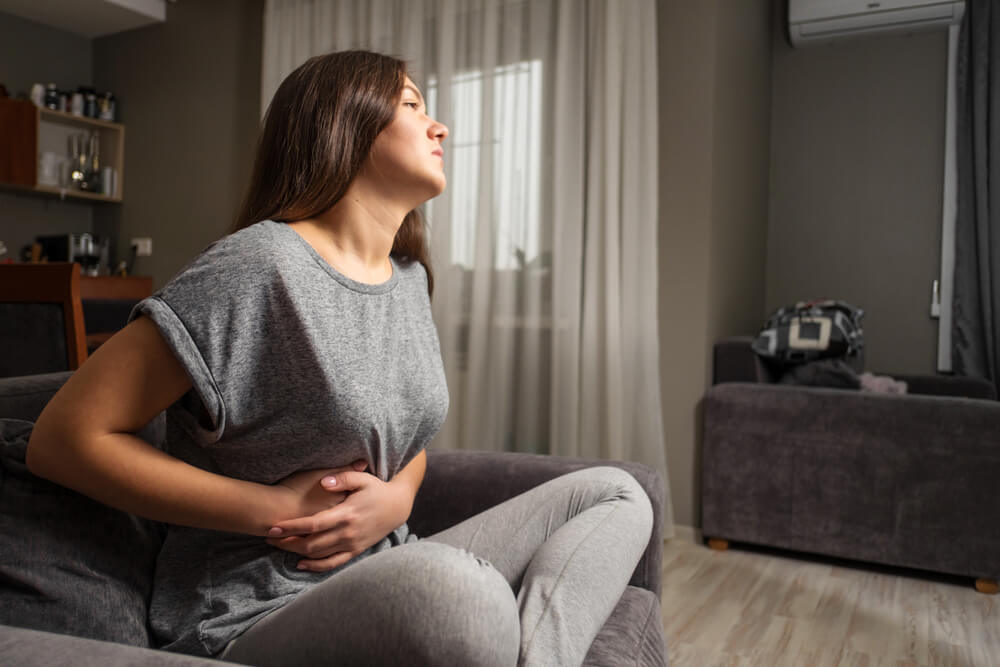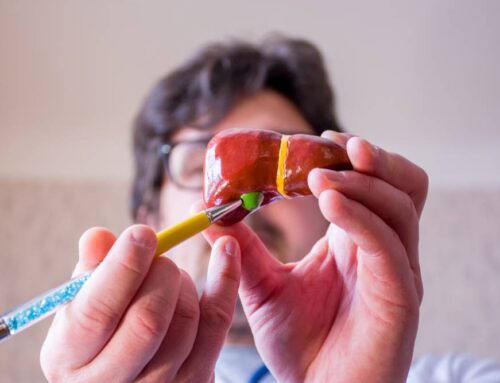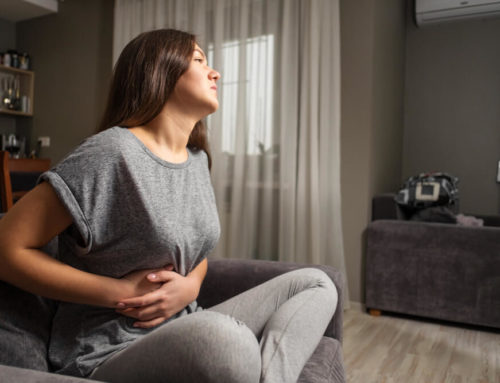Gallbladder polyps are usually harmless, but sometimes they can also be cancerous. Unfortunately, many unreliable sources on the internet have conflicting and misleading medical advice. You are in the right spot if you are looking for the most up-to-date, expert-approved facts about gallbladder polyps. In this article, you will learn about the top signs and symptoms of the condition, the causes, the diagnosis process, potential treatment, and more. Whether you or a loved one are concerned about polyps in the gallbladder, this article will come in handy.
That said, before self-diagnosing, we always recommend consulting with a healthcare specialist at a reliable clinic. Your doctor will answer all of your questions related to the condition, your specific symptoms, and possible gallbladder surgery.
So, what are polyps in the gallbladder? And what causes this condition? Find out below.
What are Gallbladder Polyps?
A gallbladder polyp is a growth that protrudes from the lining inside of a patient’s gallbladder. As a reminder, the small sac beneath the liver that stores bile is called the gallbladder.
It is estimated that four to six percent of the population deal with gallbladder polyps. In fact, often, doctors accidentally find them while investigating other health conditions. The good news is that most of the time (around 95 percent of cases), polyps in the gallbladder are benign. In rare cases, they can be cancerous.
Generally, the gallbladder polyp’s size may predict whether it is malignant (cancerous) or benign (noncancerous). Polyps in the gallbladder that are small in size (less than 1/2 inch in diameter) are typically benign or noncancerous. Noncarous patients usually do not require further treatment.
However, patients with benign polyps in the gallbladder may need to undergo follow-up examinations and tests. Your healthcare provider will use an endoscopic ultrasound or standard abdominal ultrasound to check for changes that may indicate cancer.
Overall, if you have this condition, it is usually benign. However, in rare cases, some people may experience gallbladder polyps with cancer symptoms. Individuals with polyps that are larger than 1/2 inch in diameter may be at greater risk of cancer – the risk increases with the size of the polyps. For instance, patients with gallbladder polyps larger than 3/4 inch are at the greatest risk.
What Causes Gallbladder Polyps?

According to the researchers, the exact cause of gallbladder polyps remains unknown. However, people over 60 and patients with primary sclerosis cholangitis and gallstones are at the highest risk of cancerous or malignant polyps.
What are the Symptoms of Polyps in the Gallbladder?
Usually, there are no symptoms associated with gallbladder polyps. Because of this, polyps in the gallbladder typically go unnoticed and untreated. In many cases, this can lead to delayed treatment.
Overall, more research is needed to determine what causes gallbladder polyps and what symptoms point to this condition. Nevertheless, there are three symptoms that patients with this medical condition typically complain of. These include:
- Vomiting
- Nausea
- Occasional pain in the hypochondrium or the right part of the upper abdomen
Gallbladder Polyps Cancer Symptoms
Some patients with gallbladder cancer may experience a lack of symptoms, or they may be challenging to spot. However, there are a few gallbladder polyps cancer symptoms, including:
- A lump in the stomach
- Having a high temperature or feeling shivery or hot
- The skin or the whites of the eyes becomes yellow (jaundice), feces may become paler, urine can become darker, and itchy skin
- Experiencing a loss of appetite or losing a significant amount of weight without doing it on purpose
Some patients may also experience gallbladder polyps and cancer symptoms such as:
- Being sick or feeling ill
- Sharp pain in the stomach
- Experiencing a “dragging feeling” in the right side of the stomach
- A swollen stomach (not related to eating and fullness)
However, some patients with medical conditions such as irritable bowel syndrome (IBS) may get similar symptoms regularly. It is vital to consult with a healthcare professional to determine the exact cause of your symptoms. By doing this, you will get diagnosed early, and your chances of recovery will be significantly boosted.
Sometimes, patients with gallbladder polyps and cancer symptoms that are undiagnosed may become used to these signs. However, if you have any doubts or concerns, make sure to consult with your doctor immediately.
How are Gallbladder Polyps Diagnosed?
As mentioned, gallbladder polyps typically get diagnosed while the doctor checks the patient for another unrelated medical illness. If your healthcare provider believes there may be a cause for concern, they may do a test to analyze the polyp and determine its size. Two possible tests are the following:
- Endoscopic ultrasound (minimally invasive procedure)
- Abdominal ultrasound (noninvasive procedure)
How are Polyps in the Gallbladder Treated?
Depending on the size of the patient’s polyps, treatment will vary. For instance, gallbladder polyps that are 1/2 inch in diameter or less may require a scheduled ultrasound for monitoring. The doctor may want to keep a close eye on the polyps for any alterations that could point to cancer. Patients may need to undergo endoscopic or abdominal ultrasounds.
Polyps in the gallbladder that are bigger than 1/2 inch in diameter may require a procedure called cholecystectomy or surgical removal. Many professionals recommend cholecystectomy for gallbladder polyps and gallstones.
Home Remedies for Polyps in the Gallbladder

Even though expert guidance and professional treatments are recommended for gallbladder polyps, some people may want to experiment with natural alternatives. Keep in mind that the following home remedies are not supported by clinical research and the medical community. That said, some people may find the following remedies (such as the unique gallbladder polyps diet) helpful. If you are interested in home remedies for this condition, you could:
- Apply hot water packs externally
- Try warm water enemas
- Eat pears or drink pear juice
- Eat beets or drink beet juice
- Drink unrefined (virgin) olive oil on an empty stomach
Besides these home remedies, some people recommend the following gallbladder polyps diet. For optimal health, try to:
- Avoid fatty or fried foods
- Avoid fast food or high-cholesterol foods
- Avoid carbonated, fizzy drinks
- Avoid full-fat dairy
- Consume more fresh vegetables and fruits
- Increase your daily dose of omega-3 fatty acids
- Increase your intake of turmeric and ginger
Before implementing a gallbladder polyps diet or experimenting with home remedies, consult with a healthcare professional. As mentioned, none of these alternative solutions are supported by clinical research.
The treatment method will also vary from person to person, depending on your symptoms, the severity of the condition, and your specific needs. For the best results, choose a reliable clinic and professionals with years of experience in the field.
Summary and Outlook
In summary, the vast majority of patients with this condition have no cause for concern. According to the statistics, only a tiny percentage of individuals are diagnosed with malignant forms of polyps. The majority of polyps are discovered during routine exams or exams performed for another condition. Usually, patients do not experience symptoms.
Have you been recently diagnosed with this condition? Or perhaps you believe you or a loved one may be dealing with malignant polyps? Are you looking for professional help? We are here. Book a schedule with us today and get started. Prioritize your health today.




